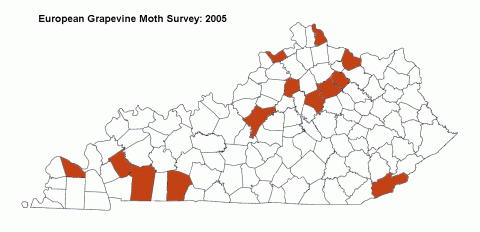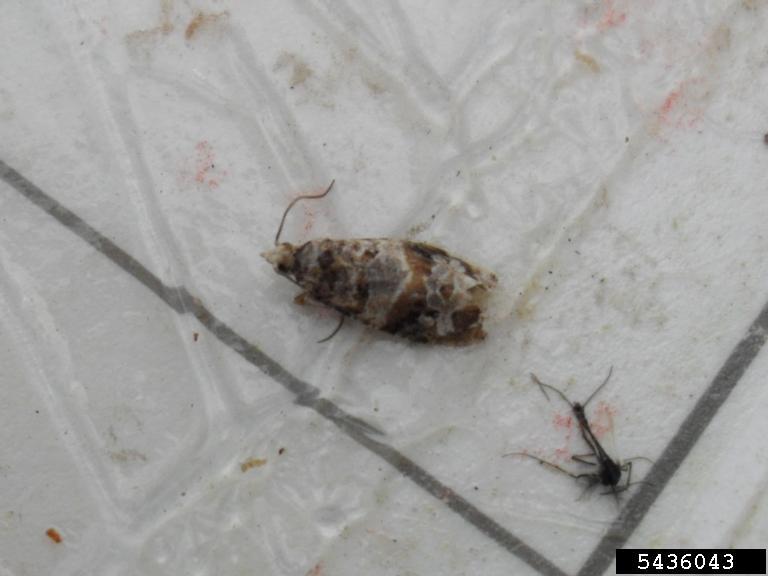European Grapevine Moth Survey: 2005
Larvae of these moths feed on bud clusters or grapes, depending on the generation (source: USDA/APHIS/PPQ Pest Detection Manual). Damage can be severe. The caterpillars gnaw the almost ripe fruits and various molds, in particular Botrytis, develop very rapidly on the wounds; the attacked fruits turn brown at the place of attack and rot. The presence of larvae and rotten fruits lowers the quality of the crop; molds render vine-making difficult and may require the crop to be harvested prematurely. These fruits would be unusable for direct sale or in wine-making. Within the past five years, the Kentucky Department of Agriculture has heavily promoted grapes as an alternative crop to tobacco. As a result, numerous small vineyards have been started and a fledgling wine industry is developing in Kentucky. Because the wine industry is such a competitive one, any pest that compromises grape quality and appearance is a threat to Kentucky's developing wine industry. European grapevine moth (Lobesia botrana) could be devastating to a vineyard if grapes were ruined and made unusable by larval feeding and subsequent infection by molds.
Wing traps were baited with European grapevine moth pheromone ( (E,Z)-7,9-Dodecen-l-ol acetate as recommended by Otis Methods Development Center) and were set in mid-May in commercial vineyards across Kentucky. Traps were checked once a week and lures were replaced once a month. No European Grapevine Moths were found.
| Year | Number of Sites | Map |
| 2005 | 16 traps in 13 counties |
 |

Photo: William Cochran
